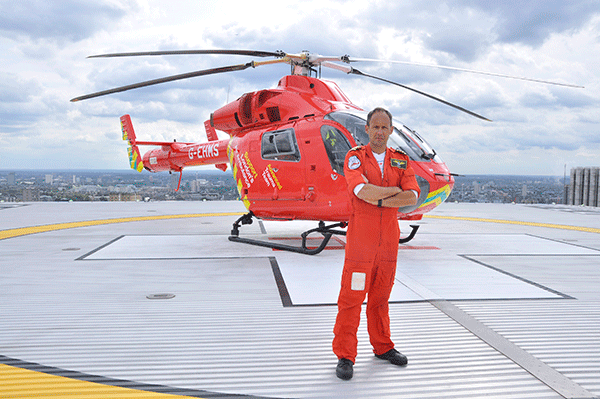Neil Jeffers is chief pilot with London’s Air Ambulance service. The charity operates an MD902 helicopter to delivers an advanced trauma team to critically injured people across the UK capital.
Flying for London’s Air Ambulance would require specific skills. What is your background?
In 1997 I took a trial lesson in a helicopter. After that, I did my PPL, which I completed in four weeks. At that time, it was possible to be an instructor with a PPL plus instructor rating, so I did my instructor rating and was offered a job with Heliair. Later, I become the CFI. I was based in Denham and at that time, London’s Air Ambulance was also based in Denham [it is now based at RAF Northolt]. I freelanced for them for several years before becoming a full-time member of staff. I now have around 7,000 helicopter flight hours.
What was it about London’s Air Ambulance that attracted you?
I like the mixture of emergency service and medical work, in addition to getting to land in some very interesting places.
Given that most of your flights are very short, how do you keep your skills current?
Although our flights are usually short, all our landings are urban landings so we get lots of practice at the type of flying we need to do. If I haven’t flown for a few days, I wouldn’t choose the most difficult landing site for my first flight.
What was the best advice you have received during your career?
When I was starting my training, the instructor asked, "Do you intend to become a commercial pilot?" I said that I did. He replied, "You will spend large amounts of money and have little potential of getting a job". It is good that aspiring pilots are given accurate information, because they should have realistic advice about their chances of success. The positive is that only the people who are the most motivated and the most interested in flying will become pilots
What is your favourite part of flying for London’s Air Ambulance?
As the Chief Pilot, my role is multi-faceted. There is pilot training and rostering, and I also still get to go flying. I think we are at a unique point in history when it comes to flying. About 100 years ago, helicopters didn’t exist, and 50 years from now there may not be helicopter pilots in the same way as there are today because most flights may be unmanned. Now is a unique few years in human history when we can fly helicopters. I am still excited to be part of that.

London's Air Ambulance
The airspace over London is complex and there are many restrictions on flights. How is prioritisation of airspace given to London’s Air Ambulance?
We have a map of London overlaid with a grid. Each square in the grid is numbered. When we receive a call to dispatch the helicopter, we find the square corresponding to the incident location and advise the grid number to Air Traffic Control. Usually they clear the airspace directly to and from the incident. There are some exceptions, such as when an incident is directly under the flight path of Heathrow. In that case we might agree on a slightly different route, maybe to fly alongside – but outside – the Heathrow flight path until we are close to the incident.
When is London’s Air Ambulance dispatched?
Each day there are up to 5,000 ‘999’ calls made to London Ambulance Service. A London’s Air Ambulance paramedic monitors the calls and if specific criteria are met, the team is dispatched. The majority of incidents we attend relate to road traffic collisions, commonly between vehicles and pedestrians, with most of the remainder being falls from height, or shootings and stabbings.
What types of procedures can be performed by the London’s Air Ambulance medical team?
The medical team has two members: an advanced trauma doctor and paramedic. The team can perform advanced medical procedures in the street which would usually only be possible in a hospital emergency department, including open chest surgery [thoracotomy] and blood transfusions. They also carry equipment that enables them to administer general anaesthetics, monitor the patient, and provide suction for draining fluids.
Source: FlightGlobal.com






















